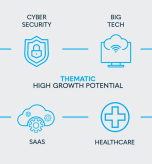During the pandemic, telehealth companies like Teladoc surged into the spotlight as lockdowns and social distancing made traditional doctor visits nearly impossible. Patients turned to virtual care in record numbers. Since then, telehealth has steadily become a mainstream component of the US healthcare system. This ongoing shift, coupled with growing demand for more affordable and convenient treatment options, has fuelled the rise of direct-to-consumer platforms like Hims & Hers (Hims). The trend is further supported by federal initiatives under the Trump administration, including executive orders such as the Most Favored Nations rule and efforts to curb healthcare spending in government-sponsored programs.
Hims has been riding the wave of GLP-1 weight-loss demand, with its stock soaring 170% in the first two months of 2025 before briefly retreating. The company took advantage of a regulatory gray area that allowed pharmacies to compound alternatives to branded drugs like Wegovy and Zepbound—provided those drugs were on the US Food and Drug Administration’s (FDA) shortage list. Despite being protected by patents and exclusivity laws, persistent supply issues meant compounding pharmacies could legally mix and sell versions of these drugs using raw active pharmaceutical ingredients, often at a steep discount. But that window is closing as supply chain capacity has grown to meet demand. As of May 22, the FDA has ordered large compounders to stop producing versions of Novo Nordisk’s GLP-1 drugs, after already doing the same for Eli Lilly’s.
While compounding may have put modest pressure on pricing, it also accelerated pharma’s shift toward more direct, affordable access. In response, Eli Lilly launched its own digital healthcare platform in January 2025, LillyDirect, teaming up with Form Health for telehealth consultations and Amazon Pharmacy for home delivery among others. The platform allows Lilly to offer lower-cost versions of Zepbound and other medications while maintaining greater control over pricing and patient experience. Telehealth players like Hims are also evolving. As compounded versions are phased out, the company is pivoting toward official partnerships with drugmakers—recently signing a deal with Novo Nordisk to distribute branded Wegovy to eligible patients.
The complexity of the US healthcare system—and the absence of centralised drug pricing—has made life-changing weight-loss treatments expensive and difficult to access. But there is an attempt to shift that dynamic. Telehealth and direct-to-consumer platforms are expanding access and convenience, helping more patients start treatment. Still, at High Street, we prefer to invest in the companies advancing the science. We back innovators like Eli Lilly, who not only own the intellectual property but also stand to benefit most from broader access and long-term patient adoption.
Unless otherwise stated, all performance and statistical figures provided in this article have been pulled from Bloomberg by the High Street Asset Management Research Team on 27 May 2025 and all the images provided in this article have been sourced from FreePik and have been used in line with their Acceptable Use Policy The contents of our newsletters are frequently sourced from or verified through our various product providers and other third parties. Although every effort is made to ensure the accuracy of the information contained in the newsletter, it should not be construed as financial advice as defined in the Financial Advisory and Intermediary Services Act. Links are provided to third-party websites for convenience only. High Street Asset Management (Pty) Ltd cannot accept responsibility and does not endorse any information contained on a third-party site. For our full disclaimer, please see: https://hsam.co.za/legal/.





